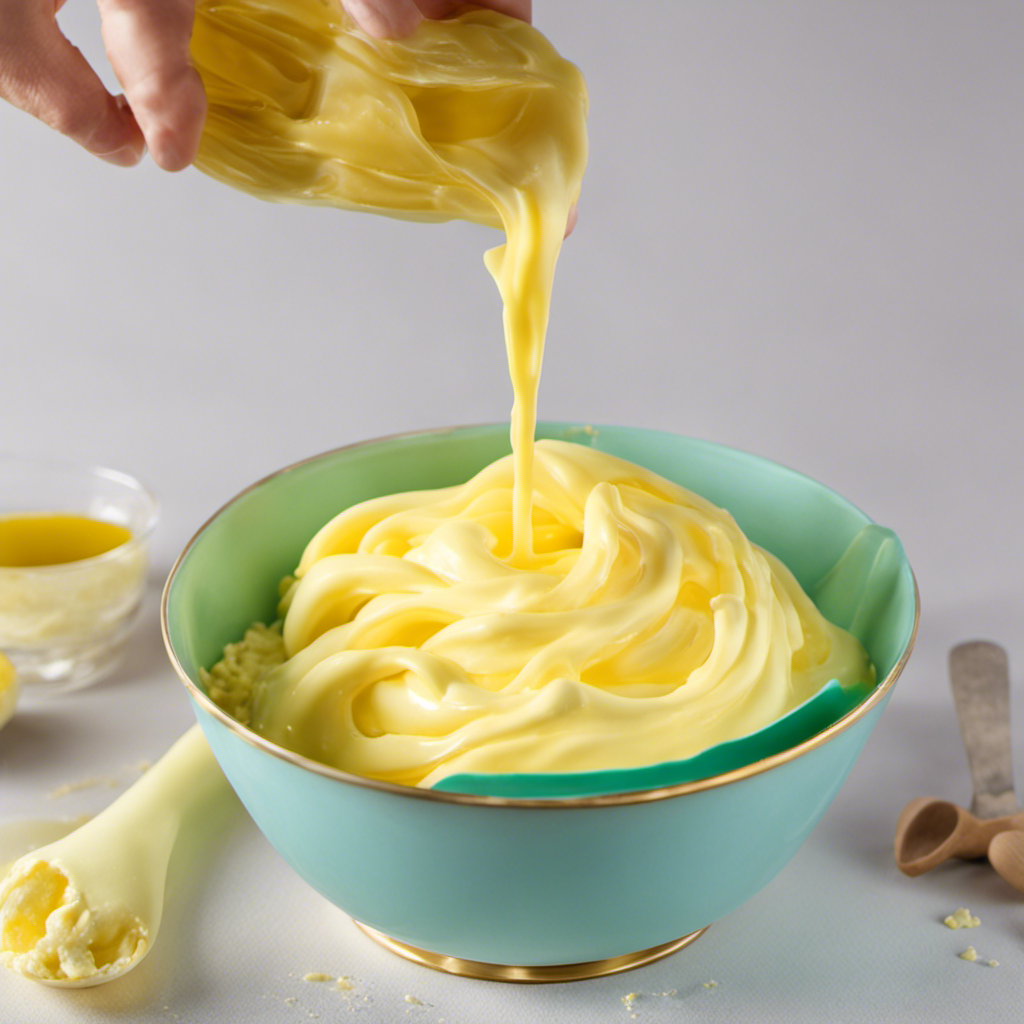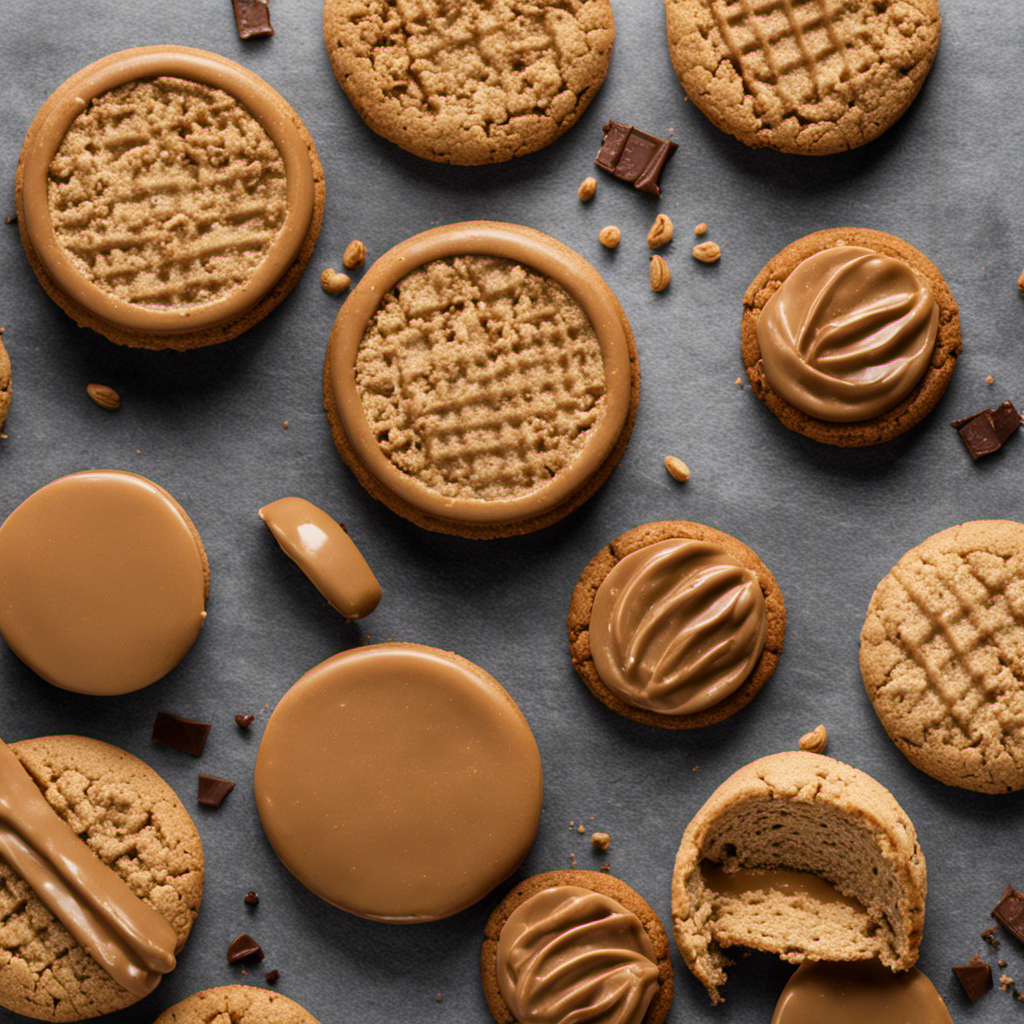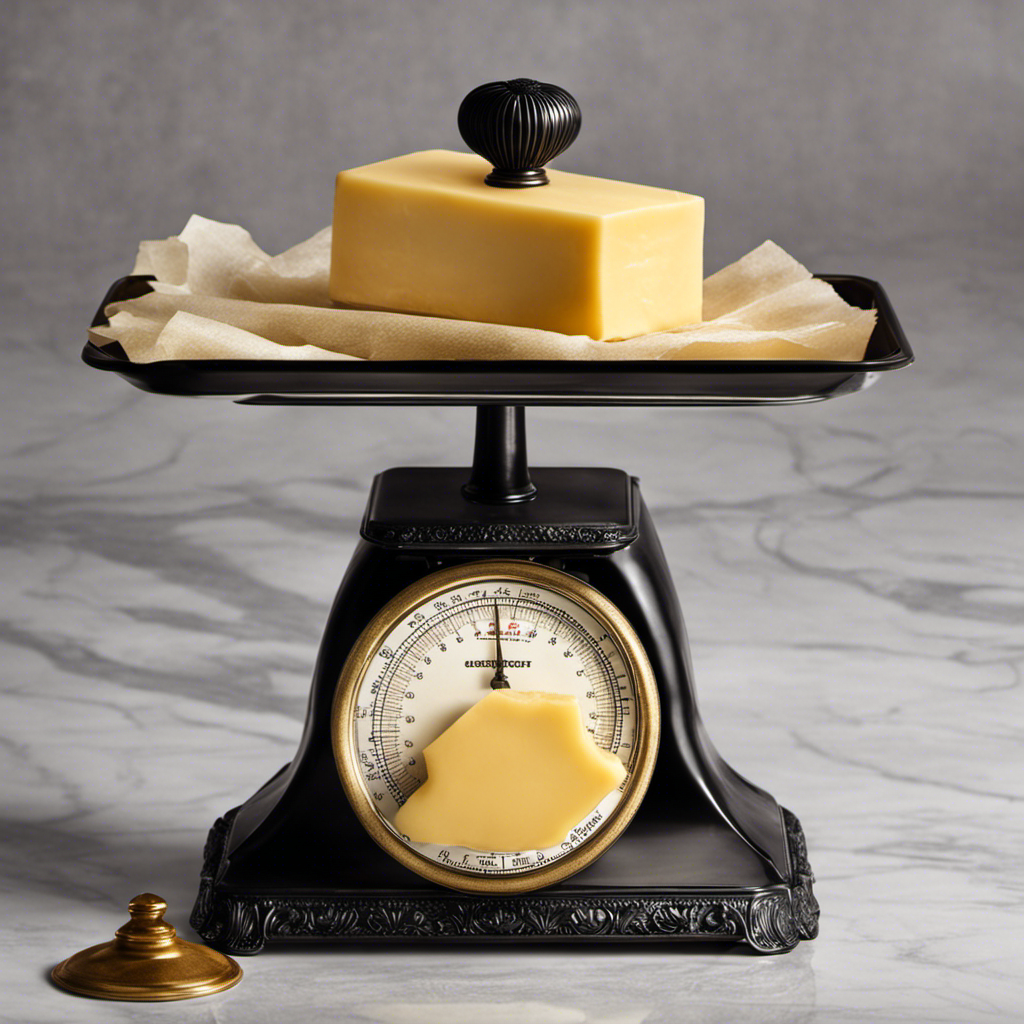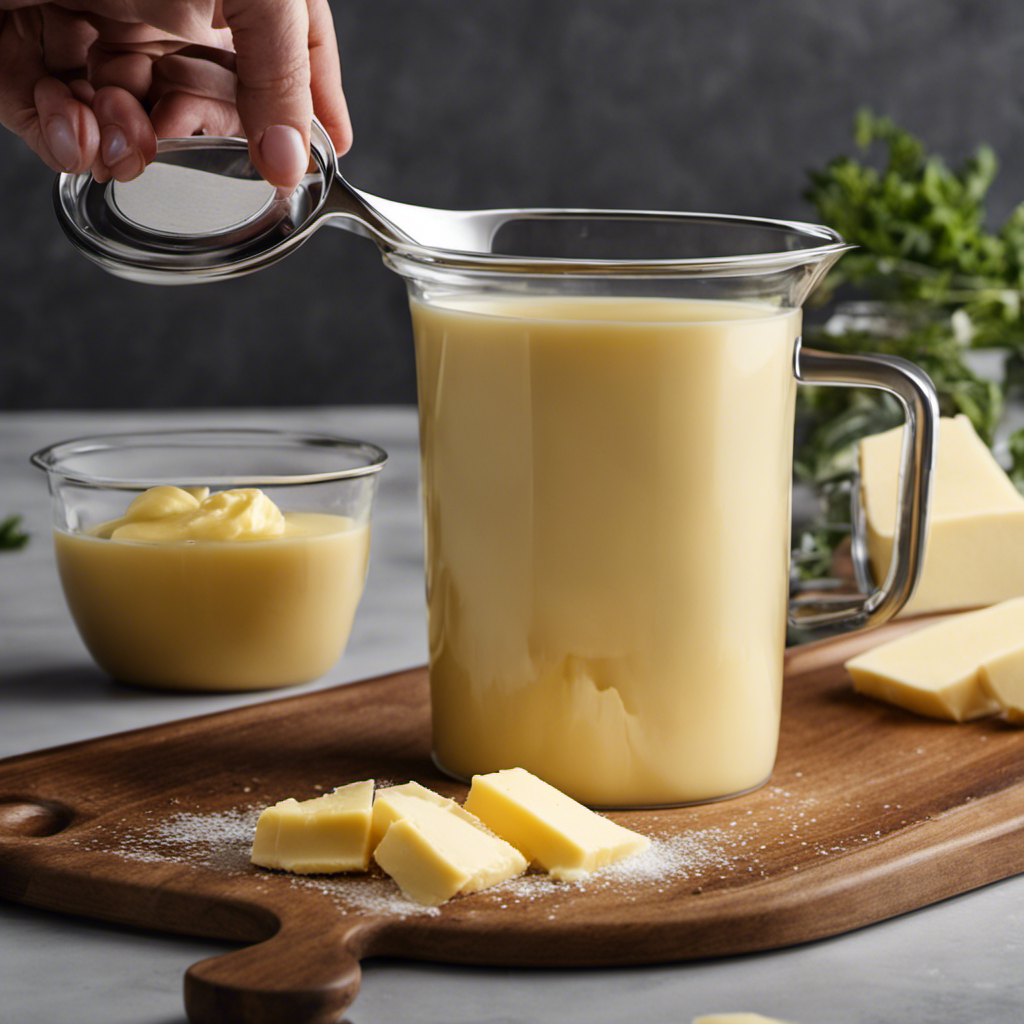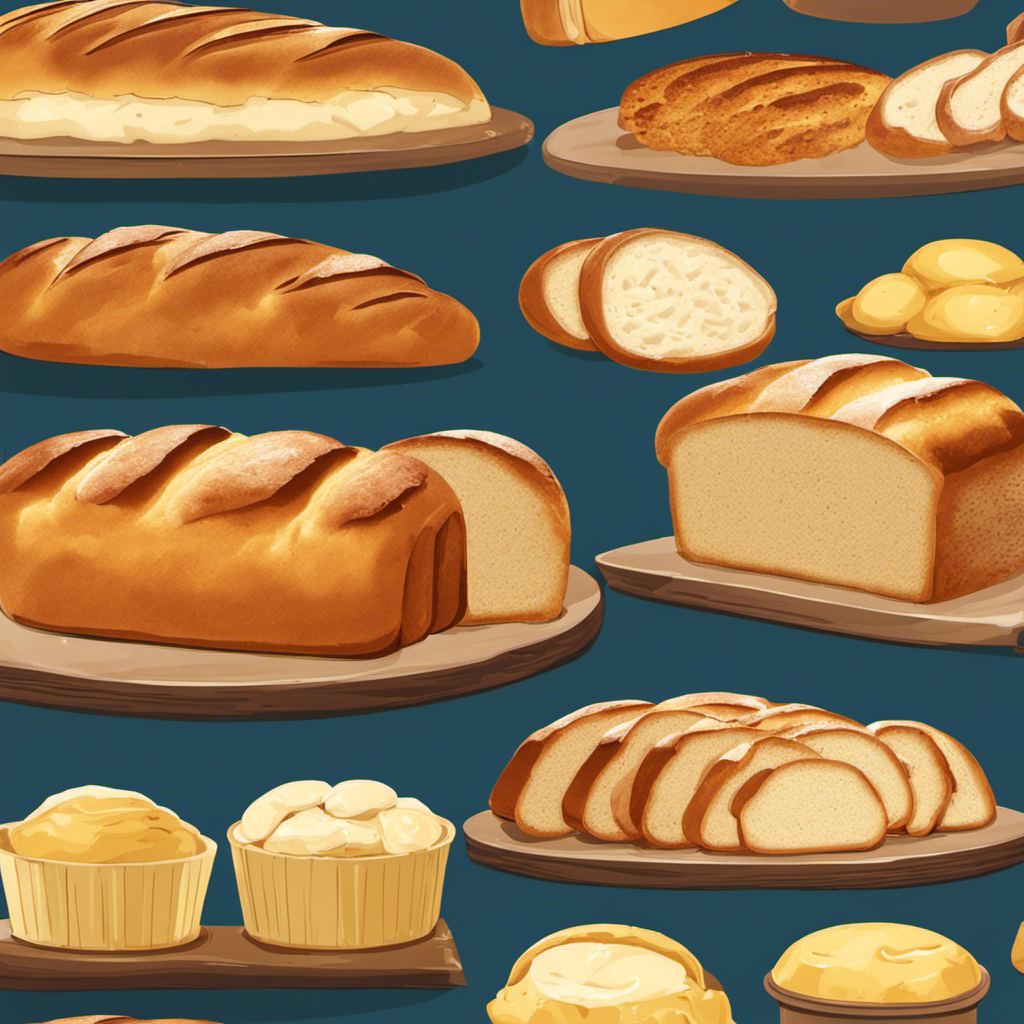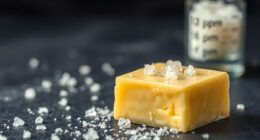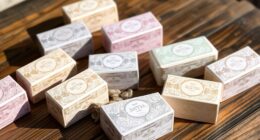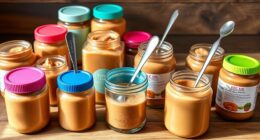I’ve always enjoyed the squishy, elastic entertainment of slime, however, conventional methods involving adhesive can get messy and difficult to tidy. That’s why I’ve found a wonderful substitution – butter slime without glue.
In this article, I’ll guide you through the step-by-step process of making this amazing slime using simple ingredients and alternative binders. Plus, I’ll share tips on achieving the perfect texture, adding color and scent, and storing your butter slime.
Get ready to dive into the world of butter slime – it’s a sensory delight you won’t want to miss!
Key Takeaways
- Butter slime can be made without glue by using alternative binders such as lotion, clay, cornstarch, and baby oil.
- Adjusting the consistency of butter slime can be done by adding more cornstarch or adjusting the amount of lotion/baby oil.
- Food coloring can be added to butter slime to create different textures and appearances, such as soft and stretchy, fluffy and light, or glossy and shiny.
- Proper storage techniques, such as avoiding sunlight and heat, keeping the container tightly closed, and restoring moisture when needed, can help preserve the soft and pliable texture of butter slime.
Ingredients for Butter Slime Without Glue
To make butter slime without glue, you’ll need some lotion and clay. Butter slime is a popular DIY slime recipe that provides a creamy and smooth texture. While glue is commonly used as a binding agent in slime recipes, there are alternatives for those who want to avoid it.
Lotion serves as a substitute for glue by providing a sticky base that helps hold the slime together. It also adds moisture and softness to the slime, giving it a buttery consistency.
Clay is another essential ingredient as it helps thicken the slime and gives it a stretchy and moldable texture.
Step-by-Step Instructions for Making Butter Slime
In this discussion, I’ll be sharing a glue-free slime recipe and an easy butter slime tutorial.
I’ll provide step-by-step instructions on how to make butter slime without using any glue.
This tutorial will be precise and informative, ensuring that you can successfully create your own butter slime at home.
Glue-Free Slime Recipe
You can easily make butter slime without using glue. This alternative recipe is perfect for those who want to avoid using glue or are looking for different ingredients to experiment with. Instead of glue, we will be using a combination of cornstarch, lotion, and baby oil to create a stretchy and fluffy texture.
Here is a table outlining the ingredients and measurements needed for this glue-free butter slime recipe:
| Ingredients | Measurements |
|---|---|
| Cornstarch | 1 cup |
| Lotion | ½ cup |
| Baby oil | ¼ cup |
To make the butter slime, simply mix the cornstarch, lotion, and baby oil together until a smooth and pliable consistency is achieved. If the slime is too sticky, add more cornstarch. If it’s too dry, add a bit more lotion or baby oil. Troubleshooting tips are provided in the table below:
| Issue | Solution |
|---|---|
| Sticky slime | Add more cornstarch |
| Dry and crumbly slime | Add a bit more lotion or baby oil |
| Slime not forming | Adjust the measurements and mix thoroughly |
With this glue-free recipe, you can enjoy the sensory experience of butter slime without the need for glue. Have fun experimenting with different ingredients and creating your own unique butter slime creations!
Easy Butter Slime Tutorial
Simply mix cornstarch, lotion, and baby oil together to create a stretchy and fluffy texture for your butter slime. It’s an easy butter slime recipe that guarantees a fun and satisfying sensory experience.
Here are some troubleshooting tips to ensure your butter slime turns out perfectly:
-
Consistency: If your slime is too sticky, add more cornstarch. If it’s too stiff, add a bit more lotion or baby oil.
-
Color: To achieve vibrant colors, use food coloring or acrylic paint sparingly. Start with a few drops and gradually add more if needed.
-
Storage: Keep your butter slime in an airtight container to prevent it from drying out. If it starts to lose its stretchiness, knead it with a small amount of lotion or baby oil.
Alternative Binders for Butter Slime
There are a few other options for binders when making butter slime without glue.
One alternative binder is cornstarch. It is a powdery substance that can help give the slime its desired texture and consistency.
Another option is liquid starch, which is commonly used as a laundry starch. It acts as a binding agent, allowing the slime to hold its shape.
One of the benefits of using alternative binders is that they are often safer and non-toxic compared to glue. This is especially beneficial for those with sensitive skin or allergies.
Additionally, glue-free slime tends to be less sticky and easier to clean up.
However, it’s important to note that different binders may result in slightly different textures and properties of the slime.
Adding Color and Scent to Butter Slime
When it comes to adding color and scent to butter slime, there are a few key points to consider.
First, choosing the right scent is crucial in creating the desired sensory experience. Whether it’s a fruity aroma or a calming lavender fragrance, the scent should complement the texture and appearance of the slime.
Second, mixing in food coloring requires precision and control. It’s important to add the coloring gradually, ensuring that the desired shade is achieved without compromising the slime’s texture.
Lastly, it’s important to note that adding color and scent can have an impact on the overall texture of the butter slime. The additional ingredients may alter the consistency, making it either softer or firmer. Therefore, it’s essential to experiment and adjust the recipe accordingly to achieve the desired result.
Choosing the Right Scent
To choose the right scent for your butter slime, try combining different essential oils or scented lotions. Here are some tips to help you in choosing the right fragrance for your slime:
-
Consider the purpose: Think about the mood or atmosphere you want your slime to create. Lavender oil can promote relaxation, while citrus scents like lemon or orange can provide an energizing effect.
-
Experiment with combinations: Mix different scents together to create a unique fragrance. For example, you can combine vanilla and coconut for a tropical aroma or mix lavender and eucalyptus for a calming scent.
-
Test before adding: Before adding the scent to your slime, test it on a small area to ensure that you like the fragrance and that it doesn’t cause any allergic reactions.
Choosing the right scent for your butter slime can enhance the sensory experience and provide additional benefits, such as relaxation or energization.
Now that you’ve chosen the perfect scent, let’s move on to the next step: mixing in food coloring.
Mixing in Food Coloring
Now that you’ve chosen the perfect scent for your butter slime, it’s time to start mixing in the food coloring.
When it comes to choosing natural dyes for your slime, there are plenty of options to explore. You can experiment with different color combinations by using ingredients like turmeric for yellow, beetroot for pink, spinach for green, and blueberries for purple. These natural dyes not only add vibrant colors to your slime but also make it safer and more eco-friendly.
To mix in the food coloring, start by adding small amounts at a time and kneading the slime until the color is evenly distributed. Remember to wear gloves to avoid staining your hands.
Now that we’ve added the food coloring, let’s move on to the next step and explore its effects on slime texture.
Effects on Slime Texture
Adding food coloring can change the texture of the slime, making it more vibrant and visually appealing. Experimenting with different textures can be a fun and creative way to enhance the overall sensory experience of playing with slime.
Here are some effects on slime consistency that you can achieve by adding food coloring:
-
Soft and Stretchy: Mixing in a few drops of food coloring can make the slime softer and more pliable, allowing you to stretch it to your heart’s content.
-
Fluffy and Light: By incorporating food coloring, you can create a lighter and fluffier slime that feels airy and cloud-like in your hands.
-
Glossy and Shiny: Adding food coloring can give your slime a glossy and shiny appearance, making it visually appealing and attractive to play with.
By using different colors and experimenting with the amount of food coloring, you can create a wide range of textures that will delight and engage your senses.
Tips for Achieving the Perfect Butter Slime Texture
For a super smooth butter slime texture, make sure to knead the mixture thoroughly.
When creating butter slime without glue, it is essential to explore alternative binders that can provide the desired consistency. One popular option is using cornstarch as a binder, as it helps create a soft and buttery texture. Another alternative is using body lotion, which adds moisture and helps bind the ingredients together.
However, it is important to consider the effects of temperature on slime texture. Warm temperatures can cause the slime to become sticky, while cold temperatures can make it stiff and less stretchy.
To achieve the perfect butter slime texture, it is recommended to store it in an airtight container at room temperature. This will help maintain its soft and pliable consistency for longer periods.
Storing and Preserving Butter Slime
To properly store and preserve your butter slime, ensure that you place it in an airtight container at room temperature. Storing techniques play a crucial role in preventing slime from drying out and maintaining its desired consistency.
Here are some tips to help you keep your butter slime fresh and enjoyable for longer:
- Avoid exposure to direct sunlight or heat, as it can cause the slime to melt or become sticky.
- Keep the container closed tightly to prevent air from entering, which can lead to dryness.
- If your slime starts to dry out, add a small amount of lotion or hand sanitizer to restore its moisture.
By following these simple storing techniques, you can extend the lifespan of your butter slime and ensure its optimal texture and playability.
Now, let’s explore some fun variations and add-ins for butter slime.
Fun Variations and Add-Ins for Butter Slime
Did you know that mixing in different food coloring or glitter can create a variety of vibrant and sparkling variations for your butter slime?
Adding a few drops of food coloring to your butter slime mixture can instantly transform it into a visually appealing and exciting sensory experience. Experiment with different colors to create a rainbow effect or mix in glitter for a touch of sparkle.
You can also try incorporating fun add-ins like foam beads, sequins, or confetti to make your butter slime even more unique and entertaining.
To take your butter slime experience to the next level, consider playing fun butter slime games like stretching contests or slime races. And don’t forget to store your butter slime in creative containers like mason jars or clear plastic containers to showcase its beauty and keep it fresh for longer.
Frequently Asked Questions
Can I Use Regular Butter Instead of Margarine for Making Butter Slime Without Glue?
Yes, regular butter can be used instead of margarine for making butter slime without glue. To make butter slime without glue, you can use alternative ingredients like cornstarch, soap, and oil.
What Can I Use as a Substitute for Cornstarch in the Recipe?
As a substitute for cornstarch in a butter slime recipe without glue, there are a few options to consider. Alternative ingredients like arrowroot powder or tapioca starch can be used instead, providing a similar thickening effect.
Can I Use Food Coloring Instead of Pigment for Adding Color to My Butter Slime?
Can food coloring be used instead of pigment to color butter slime? The differences between using regular butter and margarine are important when making butter slime without glue. Let’s explore these aspects.
How Long Can I Store Butter Slime Without It Drying Out?
To prevent butter slime from drying out, store it in an airtight container. If it does dry out, try adding a small amount of lotion or baby oil and kneading it until it becomes soft and stretchy again.
What Are Some Creative Mix-Ins I Can Add to My Butter Slime for a Unique Texture?
When it comes to creating a unique texture for your butter slime, there are endless possibilities for creative mix-ins. Experiment with different additives like foam beads, clay, or even essential oils.
Conclusion
In conclusion, creating butter slime without glue is a simple and enjoyable DIY project. By using alternative binders like cornstarch and lotion, you can achieve a smooth and stretchy texture. Adding color and scent will enhance the sensory experience.
Remember to follow the step-by-step instructions closely and store your butter slime properly to ensure its longevity. So go ahead and give it a try, and before you know it, you’ll be enjoying the satisfying and nostalgic feeling of playing with butter slime.
It’s time to get your slime on!
